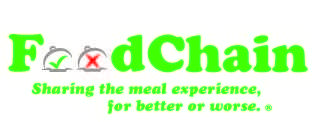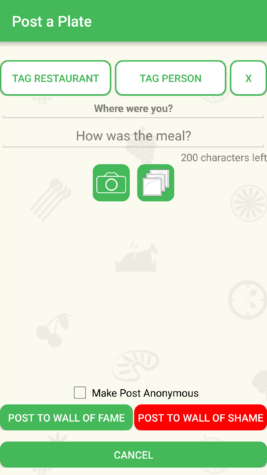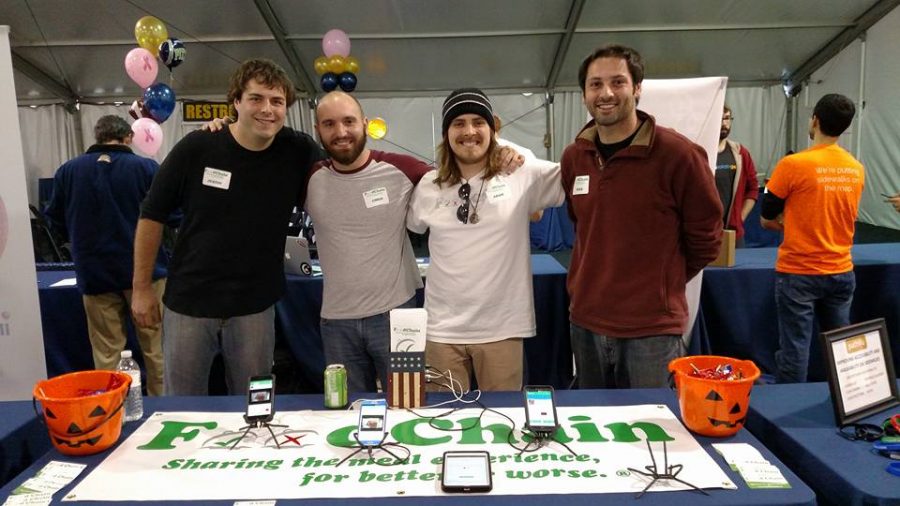When Pitt senior Justin Ruoff went out to eat with his then-girlfriend in the summer of 2014, they had very different meal experiences.
Ruoff ordered a burger and said it was delicious. He said his companion’s salad, however, was awful — the lettuce was brown and inedible.
The couple didn’t want to make a fuss and send the food back, but they also didn’t want to take the time for a lengthy review online. Instead, Ruoff, a computer science major, came up with a feedback concept that would lead to a new social media platform.
“I thought it sucks I couldn’t really share [the experience] and say ‘My burger was awesome,’ and she could say that her food was terrible,” he said. “It started from that concept: having good food on the ‘Wall of Fame’ and bad food on the ‘Wall of Shame.’”
After Ruoff pitched the idea for a food rating app at Pitt’s “Students for Startups” Innovation event in October 2014, the concept captured the attention of two other senior computer science majors at the event, Adam Rison and Chris Meier.
The three, along with Michael Sebastiani, a Robert Morris University graduate, met the next month to discuss Ruoff’s idea for an app called FoodChain.

“We started making graphics within the first hour we started talking about it,” Sebastiani said. The co-founders, who are self-funding the app, spent the rest of the month on development and created a software plan.
A year later, on Oct. 10, 2015, FoodChain, a social media platform that allows users to upload pictures of their food and vote on the experience, launched its beta test for Android and iOS. Currently, 55 people use the free app to rate and review food. Ruoff, who is a part of Pitt’s blast furnace, a startup and entrepreneur program run through the Innovation Institute, presented the app earlier this semester to a group of students and asked them to become the beta testers. Ruoff and the other founders also post on a Facebook page they made for the app asking for more testers.
On the app’s home screen is a “My Feed” tab that allows users to see which restaurants their friends have posted about or reviewed. Aside from friends, or other people a user can follow, is a “Near Me” tab and a “Top Plates” tab that let users see the most favorable reviews of restaurants within a 30-mile radius of them.
To use the app, users simply take a photo of what they are eating, write a caption and post it. Users can also vote on other posts that appear in their feeds.

On the app, users post their dining experiences on either the “Wall of Shame” or the “Wall of Fame.” They can also vote on whether or not they would try other users’ meals and post comments.
Some Oakland restaurants, including Mad Mex on Atwood Street, have already made it onto the app’s “Wall of Fame.”
Pat Kelly, a manager at Mad Mex, said the restaurant wasn’t familiar with FoodChain, but was happy to be on the “Wall of Fame” and was open to any criticism from food rating apps.
“[Reviews] aren’t alien to us,” Kelly said. “Your business is always open to criticism, and we’re always open to feedback.”
Unlike other restaurant review sites like Yelp, Ruoff said FoodChain revolves around pictures, votes and continued interaction. Also unlike other sites, FoodChain reviews have a 100-character limit.
“We went on Yelp once and spent five minutes writing a review. I know it doesn’t seem like that much time, but we’re a right here, right now generation,” Ruoff said. “People don’t want to spend five minutes writing a review.”
The app will automatically identify all restaurants within a 30-mile radius of the user, but restaurants who officially sign up can get free advertising in the form of a promoted post once per week.
The restaurants that sign up, according to Ruoff, can also use data that FoodChain collects to improve their service.
“Say a restaurant is doing well and getting up-votes all the time, then every Tuesday at five o’clock they get negative reviews. We can then take that information and say ‘Hey, every Tuesday at five, something is happening with your restaurant,’” Ruoff said. “‘You should check your staff. Did you have a shift change? Did you have a new cook come in?’”
Ruoff is already communicating with local restaurant owners, such as DiSalvo’s in Latrobe, Pennsylvania, but has not started offering promoted posts.
“The bottom line is that it is so early in the restaurant promotion process that right now our dealings with them are focused on developing relationships with these businesses and less on marketing the app,” Ruoff said.
There are 55 users beta testing the app, and Ruoff said they’re using it frequently.
“Right now, of those first 55 [users] that are on FoodChain, all of them have been active on a monthly basis and between 80 and 85 percent have been active on a daily basis,” Ruoff said.
One of those beta testers, Benjamin Pollock, a sophomore mechanical engineer at Pitt, uses the app when he’s hungry, which is often he said. Similar to scrolling through an Instagram account dedicated to food, Pollock said he enjoys looking at other people’s meals and finding new places to eat and new dishes to try, even though he’s on a college student diet.
Since Pollock just signed up in mid-November, he’s mostly reviewed restaurants over Thanksgiving break in his hometown near Philadelphia, though he’s also posted his mom’s cooking. While he likes the app, Pollock said the biggest challenge of using the app is remembering to use it.
“My only problem with the app is that when I go on and see all the delicious food I get hungry, so I go out to eat, but then forget to document my meal while it still looks good because I dig in immediately,” Pollock said.
According to Sebastiani, users can review any food on the app. Sebastiani said he made the app’s first “Wall of Shame” post about a homemade turkey sandwich as a joke.
The co-founders said that about three-fourths of the posts on FoodChain are positive, and the negative ones, like Sebastiani’s, are funny.
Gregory Coticchia, director of Pitt’s Innovation Institute, said FoodChain is part of an industry that’s shifted since 2007, when apps became a booming market.
”We’ve seen the first generation of [apps] go by, where people think they’re going to get rich on a 99 cent app,” Coticchia said. “That’s kind of gone by the wayside.”
“[Now] people are not just downloading [apps] and trying them out, but are actually engaged with them.”
FoodChain joins several other innovative technological developments finding a home in Pittsburgh.
One of the most successful former startups, Uber, has an Advanced Technology Center in Pittsburgh and brought in students from Carnegie Mellon University and Pitt to join the development process.
“I think we are at one of the high points in terms of tech industry startups and entrepreneurship [in Pittsburgh],” Coticchia said. “We have more organizations that support that activity. We have more people interested in the activity.”
Because of this market, Pittsburgh’s Downtown Partnership proposed calling the city the “Silicon Strip,” but Coticchia said that idea wouldn’t be useful.
“What you want to do is differentiate [from other cities],” he said. “There’s only one Silicon Valley, and it’s great on its own. When we say ‘Silicon Strip,’ it has a ‘me too’ sound. It says that we want to be like them, as opposed to other things we built ourselves.”
Coticchia said the success of a tech startup begins with a creative team.
“People want to know who is the team that’s bringing [the idea] because people tend to bet on the jockey, not just the horse,” he said.
The FoodChain team, currently operating out of Ruoff’s house in Greensburg, is reminiscent of other ambitious college entrepreneurs, such as Snapchat’s creators from Stanford University or Mark Zuckerberg, the creator of Facebook.
Ruoff thinks the idea will take off because it’s focused on the most important part of going out to eat.
“Individual meals — that’s what really matters,” he said. “People can say they’re going to a restaurant for atmosphere all they want. You really go for the food.”



